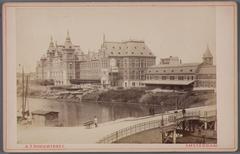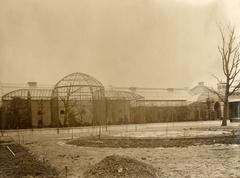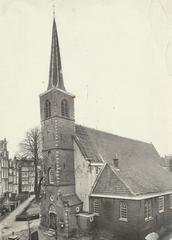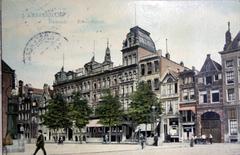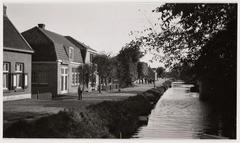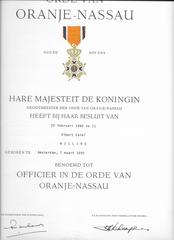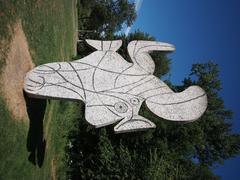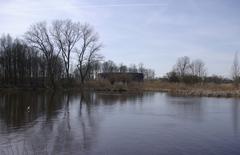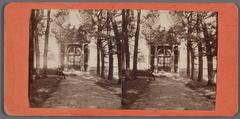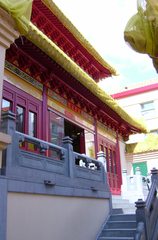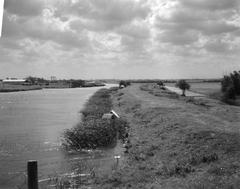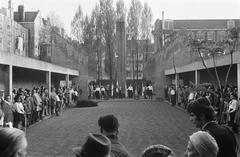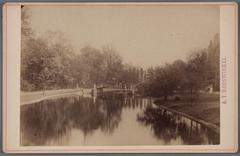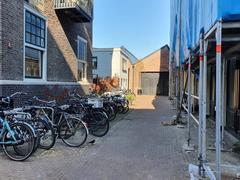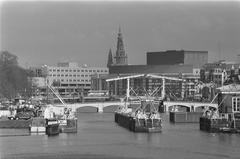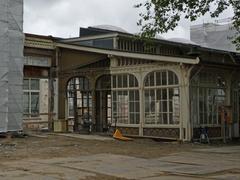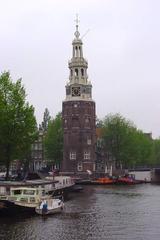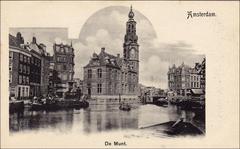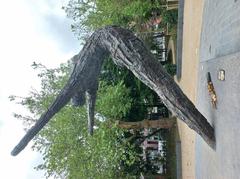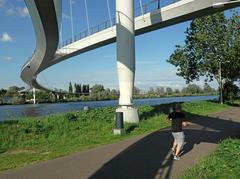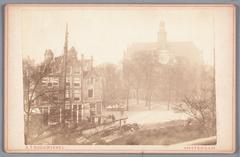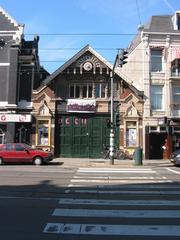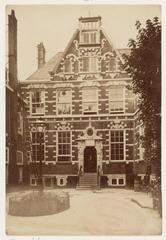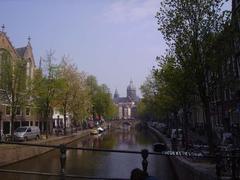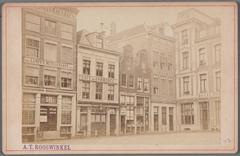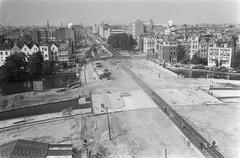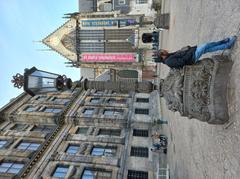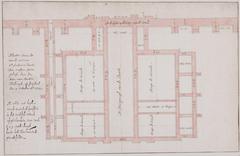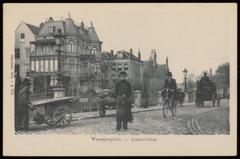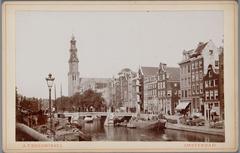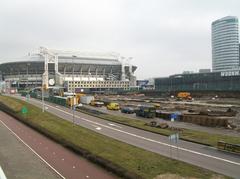Monument Oud-Osdorp: Visiting Hours, Tickets, and Guide to Amsterdam Historical Sites
Date: 03/07/2025
Introduction: The Significance of Monument Oud-Osdorp
Situated in the historic village core of Oud Osdorp, on Amsterdam’s western edge, Monument Oud-Osdorp offers an authentic window into one of the city’s oldest rural communities. This monument is more than a physical marker; it stands as a testament to centuries of Dutch ingenuity in water management, land reclamation, and community resilience. Here, the interplay between medieval polder village traditions and modern urban integration is visible in the architecture, commemorative art, and tranquil landscape. Visitors are invited to explore a living link to the Netherlands’ rural origins amid dike roads, green meadows, and historic farmhouses (I amsterdam - Oud Osdorp, Sloten Oud Osdorp, Amsterdam City Card).
Table of Contents
- Discover the Monument Oud-Osdorp: Amsterdam’s Hidden Historical Gem
- Oud Osdorp and Its Monument: History and Heritage
- Visitor Information: Hours, Tickets & Accessibility
- Getting There: Public Transport, Cycling, and Parking
- Exploring the Village and Nearby Attractions
- Frequently Asked Questions (FAQ)
- Historical Background of Oud-Osdorp
- Description and Features of the Monument
- Practical Visitor Tips and Travel Advice
- Architectural and Cultural Significance
- Guided Tours and Events
- Conclusion and Further Resources
Discover the Monument Oud-Osdorp: Amsterdam’s Hidden Historical Gem
Monument Oud-Osdorp is nestled in the picturesque rural heart of Oud Osdorp. It provides a unique opportunity to experience Amsterdam’s agricultural past and the evolution from polder village to city district. The site embodies the enduring spirit of a community that shaped Amsterdam’s western expansion.
Oud Osdorp and Its Monument: History and Heritage
Oud Osdorp, known as Oostdorp until the 20th century, originated around 1100 CE. The village’s ribbon-like structure along the Osdorperweg dike, historic windmills, and traditional farmhouses are emblematic of Dutch polder planning and water management. Monument Oud-Osdorp commemorates the area’s rural and engineering legacy, serving as both a tangible link to the past and a place for reflection on urban growth and land stewardship.
Visitor Information: Hours, Tickets & Accessibility
- Opening Hours: The monument is an open-air site, accessible year-round, 24/7.
- Admission: Free of charge for all visitors.
- Guided Tours: Occasional walking tours are offered, particularly during festivals or heritage events. Check the official Amsterdam tourism website or local visitor centers for current schedules.
- Accessibility: Paved dike roads and gentle terrain make the area widely accessible, including for visitors with mobility challenges.
Getting There: Public Transport, Cycling, and Parking
- Public Transport: Tram Line 17 and Bus 69 connect central Amsterdam to Oud Osdorp, with stops near the monument.
- Cycling: Dedicated bike paths offer a scenic and sustainable route to the village.
- Car: Limited street parking is available; public transport or cycling is recommended for convenience and sustainability.
Exploring the Village and Nearby Attractions
While visiting Monument Oud-Osdorp, take the time to explore:
- Historic Farmhouses and Windmills: Experience the charm of Osdorperweg and iconic sites like De 1200 Roe.
- Osdorper Binnenpolder: Walk through the last remaining original peat meadows, a rare ecological and cultural landscape.
- Local Parks and Green Spaces: Relax in Stadspark Osdorp or enjoy cycling and walking routes.
- Local Eateries: Sample regional Dutch cuisine at nearby cafes and restaurants.
- Molen van Sloten: Visit the working windmill and museum dedicated to Dutch water management.
Frequently Asked Questions (FAQ)
Q: What are the visiting hours?
A: The monument and village are accessible 24/7, all year round.
Q: Is there an entrance fee?
A: No, the site is free to visit.
Q: Are there guided tours?
A: Guided tours are occasionally available during special events; check local listings.
Q: How do I get there by public transport?
A: Take Tram Line 17 or Bus 69 from Amsterdam city center.
Q: Is the site accessible for visitors with disabilities?
A: Yes, the terrain is flat and paved.
Q: Are there cafes or restrooms nearby?
A: Facilities are limited in the immediate area; head to Osdorpplein or Sloten village for amenities.
Historical Background of Oud-Osdorp
Oud-Osdorp began as a medieval polder village, built along a dike to protect against flooding. The characteristic landscape of straight canals and meadows reflects centuries of land management (Wikipedia: Osdorp). During Amsterdam’s westward expansion in the 20th century, the area retained much of its rural identity even as it became part of the city’s urban fabric.
Description and Features of the Monument
Monument Oud-Osdorp is a modest yet evocative heritage site, located near Osdorperweg. Its elements include:
- Commemorative Plaque or Stone: Inscribed with information about Osdorp’s founding and significance.
- Sculptural Elements: Depicting themes of farming, dike-building, and early settlement.
- Landscape Integration: Surrounded by polder ditches, meadows, and traditional Dutch plantings.
The monument’s simplicity and materials—brick, stone, and wood—reflect the humble origins and enduring values of the local community.
Architectural and Cultural Significance
The monument and its landscape are officially recognized as municipal heritage sites (amsterdamopdekaart.nl). The design emphasizes humility, permanence, and respect for the rural Catholic community that shaped the area. Crosses, laurel wreaths, and inscriptions evoke both religious and cultural traditions, connecting visitors with centuries of rural life.
Practical Visitor Tips and Travel Advice
- Best Time to Visit: Spring and summer for wildflowers and green meadows.
- Safety: The area is quiet and safe; standard city precautions apply.
- Weather: Prepare for variable weather, especially in autumn and winter.
- Language: Dutch and English signage available; English is widely spoken.
- Photography: The landscape and architecture offer excellent photo opportunities.
Guided Tours and Events
While regular tours are not scheduled, local historians and organizations sometimes organize special walks, especially during community festivals or anniversaries (such as Amsterdam’s 750th in 2025). Check (slotenoudosdorp.nl) for event updates.
Conclusion
Monument Oud-Osdorp is a quietly profound testament to Amsterdam’s layered past—where medieval rural heritage meets modern urban life. Freely accessible and thoughtfully preserved, it offers a meaningful destination for those seeking to understand the city’s origins, water management ingenuity, and enduring community spirit.
Plan your visit to Oud Osdorp to discover a side of Amsterdam far from the crowded city center, and immerse yourself in a living memorial to Dutch resilience and rural identity.
Enhance Your Visit
- Download the Audiala app for guided audio tours and interactive maps of Amsterdam’s historical sites, including Oud Osdorp.
- Follow local heritage organizations on social media for news about events and community stories.
- Choose sustainable travel options and support local initiatives to help preserve this unique cultural landscape.

